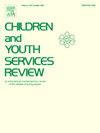Bridging the gap: The role of parent advocates in enhancing child protective services practice
IF 2.4
2区 社会学
Q1 FAMILY STUDIES
引用次数: 0
Abstract
Background
Child Protective Services (CPS) workers often face significant challenges in connecting with, engaging, and communicating with families due to systemic distrust and administrative burdens. Parent Advocates (PAs), individuals with lived child welfare experience, have been integrated into CPS practice to improve family engagement and service delivery.
Objective
This study explores CPS staff members’ perspectives on the role of PAs within New York City’s Enhanced Family Conferencing Initiative (EFCI), examining how they support CPS practice and enhance decision-making.
Participants and Setting
The study includes 49 CPS staff members, comprising caseworkers, supervisors, managers, and conference facilitators from the New York City Administration for Children’s Services (ACS).
Methods
Qualitative semi-structured interviews were conducted to capture CPS staff’s perceptions of and experiences with PAs. Thematic analysis was employed to identify key patterns in the data regarding PAs’ contributions to CPS practice.
Results
Findings reveal that PAs strengthen CPS practice in three key ways. They bridge communication gaps by fostering trust, enhancing engagement, and sharing essential information. They improve collaboration by supporting service planning, decision-making, and access to community resources. Finally, they alleviate CPS staff workloads by providing case updates, assisting with service navigation, and ensuring families receive needed support.
Conclusions
The integration of PAs into CPS systems enhances CPS practice by fostering trust, improving communication, and reducing casework burdens. Their contributions underscore the need for expanding parent advocacy programs within CPS to support more equitable and family-centered decision-making. Future research should examine the long-term impact of PAs on child welfare outcomes.
弥合差距:家长倡导者在加强儿童保护服务实践中的作用
由于系统不信任和行政负担,儿童保护服务(CPS)工作者在与家庭联系、参与和沟通方面经常面临重大挑战。具有儿童福利生活经验的家长倡导者(PAs)已被纳入CPS实践,以改善家庭参与和服务提供。目的:本研究探讨了CPS工作人员对纽约市增强家庭会议倡议(EFCI)中PAs角色的看法,考察了他们如何支持CPS实践和加强决策。该研究包括49名CPS工作人员,包括来自纽约市儿童服务管理局(ACS)的个案工作者、主管、经理和会议主持人。方法进行定性半结构化访谈,以了解CPS员工对PAs的看法和经验。采用主题分析来确定数据中关于PAs对CPS实践贡献的关键模式。结果调查结果显示,PAs在三个关键方面加强了CPS的实践。它们通过培养信任、加强参与和分享重要信息来弥合沟通差距。它们通过支持服务规划、决策和获取社区资源来改善协作。最后,他们通过提供病例更新,协助服务导航,并确保家庭得到所需的支持,减轻了CPS工作人员的工作量。结论将PAs整合到CPS系统中,通过培养信任、改善沟通和减少个案工作负担来加强CPS的实践。他们的贡献强调了在CPS内扩大家长倡导项目的必要性,以支持更公平和以家庭为中心的决策。未来的研究应检查PAs对儿童福利结果的长期影响。
本文章由计算机程序翻译,如有差异,请以英文原文为准。
求助全文
约1分钟内获得全文
求助全文
来源期刊

Children and Youth Services Review
Multiple-
CiteScore
6.30
自引率
6.10%
发文量
303
期刊介绍:
Children and Youth Services Review is an interdisciplinary forum for critical scholarship regarding service programs for children and youth. The journal will publish full-length articles, current research and policy notes, and book reviews.
 求助内容:
求助内容: 应助结果提醒方式:
应助结果提醒方式:


